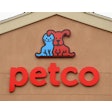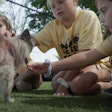
In a market crowded with hundreds of active pet food brands across Latin America, competition has reached a level rarely seen before. Price still dominates the battlefield, yet the brands that survive are the ones that truly mean something.
To explore this further, David Herrera, brand architect and founder of Budas, offered valuable clarity on what makes a brand not only visible but also unforgettable.
"The brands that stand out are the ones that stay present in the customer's mind, win at the point of sale, and create experiences that are unique and invaluable," Herrera said. His words capture an important truth: in the pet food industry, differentiation starts with empathy, but it should not end there.
From empathy to identity
Understanding pet owners deeply is the foundation of every strong brand. Shopper data consistently confirms this insight. The numbers reveal what words cannot: the emotional bond that drives purchases, the balance between value and affection, and the patterns that separate true loyalty from simple repetition. That is where real brand architecture begins, where data meets emotion.
Herrera describes branding as architecture, not decoration. It is the invisible structure that builds trust, meaning and consistency. The process, he explains, begins by uncovering the unspoken needs of pet owners and shaping a brand personality that acts, speaks and feels coherent across every touchpoint. When storytelling and design align with real motivations, a brand becomes more than recognizable. It becomes alive.
Beyond metrics: measuring brand strength with meaning
When asked which KPIs (Key Performance Indicators) truly show how healthy a brand is, Herrera's answer was simple and powerful: brand value. "It brings together everything that matters in Latin American markets: awareness, preference and loyalty, into one clear financial measure," he explained.
Across the region, many companies still focus on short-term sales and price wars, forgetting that emotion must also show results. Measuring how a brand adds financial value is what helps local players grow stronger and more respected.
As private labels and low-cost brands expand in supermarkets and pet shops, Herrera believes that established brands must defend their place through expertise, authenticity and depth.
Looking ahead, he points to two key forces shaping branding in Latin America: purpose and humanization. Pets are now part of people's identity and daily life. Brands that understand this reality will lead the future of the industry.
"The more artificial the world becomes, the more we'll crave what feels human," Herrera added.
That balance between heart and data is what keeps branding alive in the region.
Iván Franco is the founder of Triplethree International and has collaborated on hundreds of research projects for several consumer goods industries.















